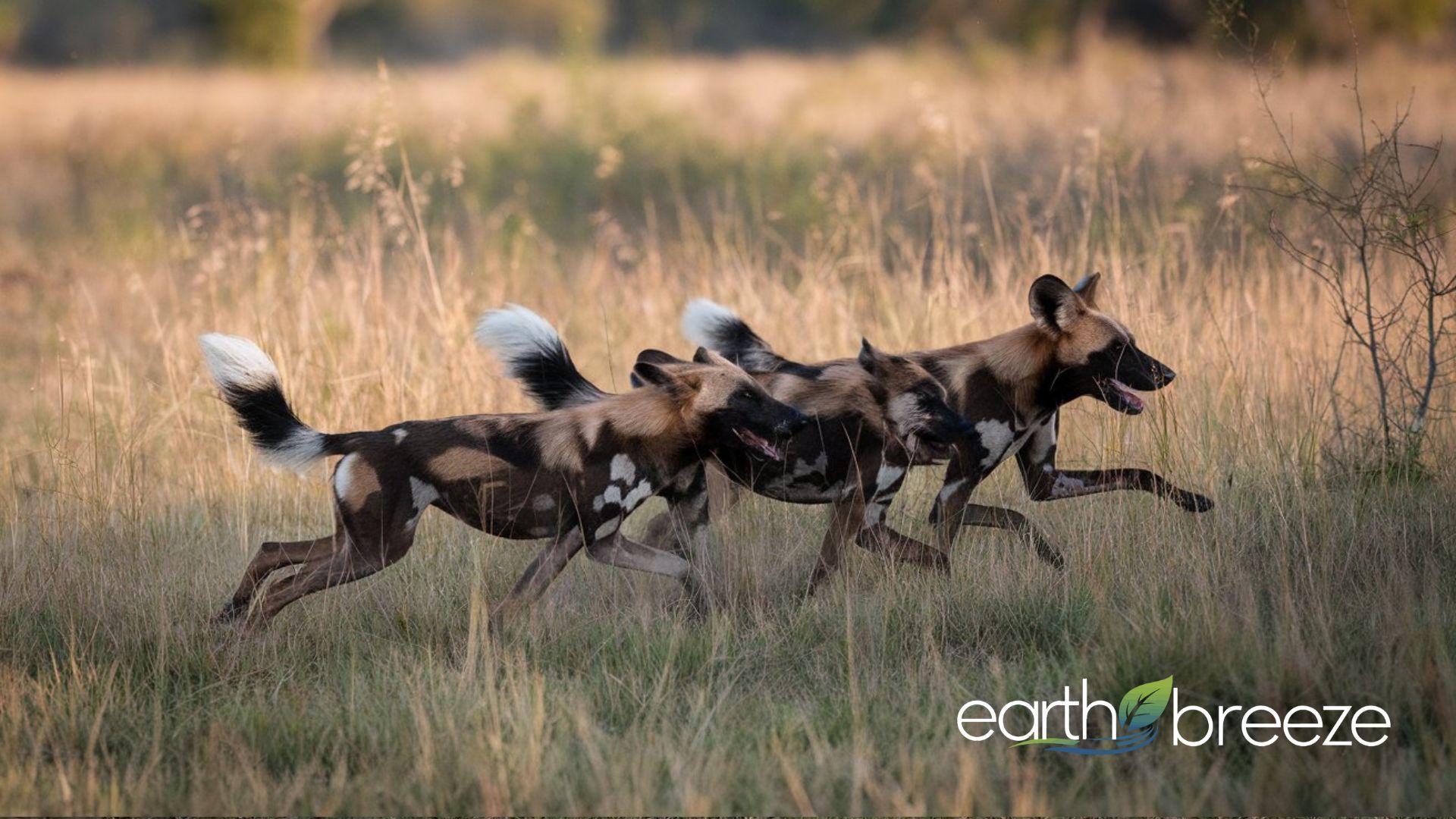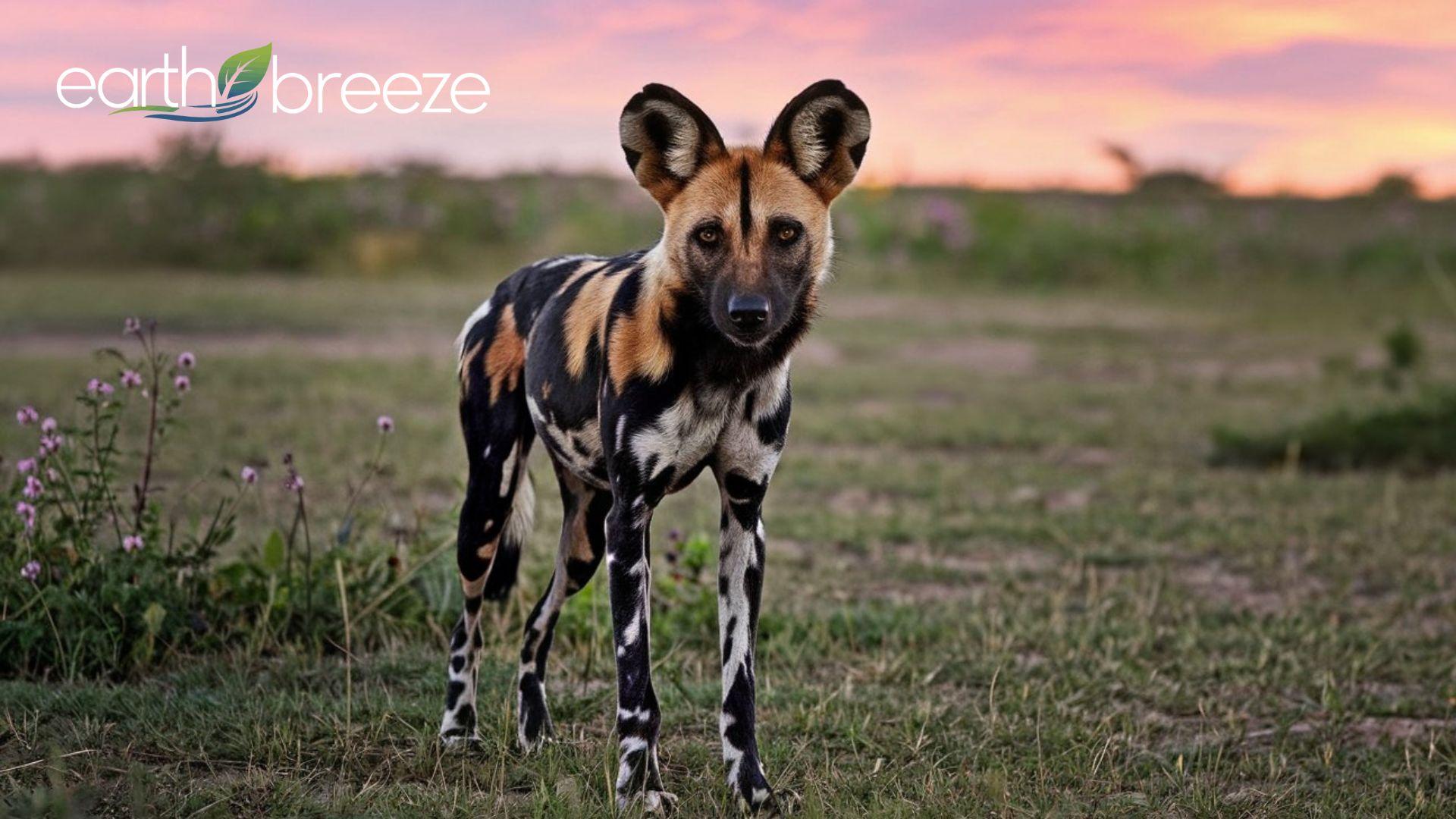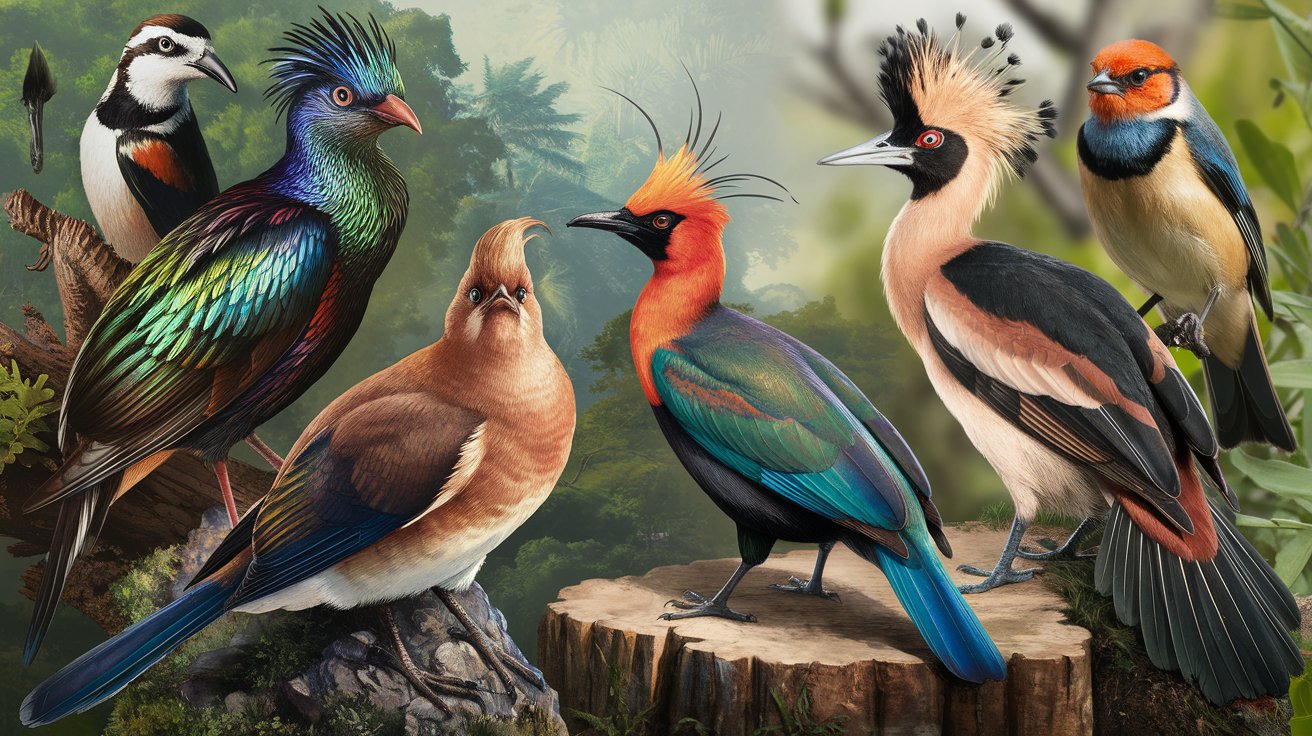The African wild dog, also known as the painted wolf due to its striking coat patterns, is one of the most fascinating and endangered predators in the world. In this article, we’ll explore their biology, behavior, and the challenges they face in the wild.
1. Introduction to African Wild Dogs
African wild dogs (Lycaon pictus) are social carnivores found across sub-Saharan Africa. Known for their cooperative hunting and pack dynamics, they are integral to maintaining balanced ecosystems by controlling prey populations.
Despite their importance, African wild dogs are among the most endangered carnivores, with fewer than 6,000 individuals remaining in the wild.
2. Scientific Classification
The African wild dog belongs to the Canidae family but is distinct from domestic dogs and wolves.
Taxonomy:
- Kingdom: Animalia
- Phylum: Chordata
- Class: Mammalia
- Order: Carnivora
- Family: Canidae
- Genus: Lycaon
- Species: Lycaon pictus
Unlike other canids, they have four toes per paw instead of five and lack dewclaws.
3. Physical Characteristics
African wild dogs are medium-sized canids known for their striking appearance.
Coat Patterns:
Each wild dog has a unique coat of black, yellow, brown, and white patches. This natural camouflage helps them blend into their environment.
Size and Build:
- Height: 24-30 inches at the shoulder
- Weight: 40-70 pounds
- Adapted for endurance running with long legs and a lean body.
Their large, rounded ears enhance hearing, crucial for locating prey and communicating over long distances.
4. Habitat and Distribution
African wild dogs inhabit savannas, grasslands, and open woodlands.
Geographic Range:
Once widespread across Africa, their range has diminished due to human activities. They are now found in isolated populations in countries like Botswana, Zimbabwe, Tanzania, and South Africa.
Preferred Habitat:
They thrive in areas with abundant prey and low human disturbance.
5. Social Structure and Behavior
Wild dogs live in tight-knit packs ranging from 6 to 20 members.
Pack Dynamics:
- The dominant alpha pair leads the pack.
- Cooperative behavior ensures all members, including the sick and young, are fed.
Unique Social Traits:
- Rare intra-pack aggression.
-
Careful sharing of food, even regurgitating for pups and weaker pack members.

6. Communication Among African Wild Dogs
African wild dogs rely on complex communication to maintain pack cohesion.
Vocalizations:
- Chirps and squeaks signal excitement or coordination.
- Low growls and whines convey submission or distress.
Body Language:
Their movements, tail positions, and ear gestures are integral to non-verbal communication.
7. Diet and Hunting Techniques
African wild dogs are skilled hunters, boasting a success rate of up to 80%, higher than many other predators.
Prey:
Their diet includes medium-sized ungulates like impalas, gazelles, and wildebeest calves.
Hunting Strategy:
- Highly cooperative hunts, involving careful planning and role assignment.
- Endurance running exhausts prey before they deliver the final attack.
8. Reproductive Cycle
Only the alpha pair typically breeds within a pack.
Breeding and Birth:
- Breeding season: May to July.
- Litters average 6-12 pups, born in dens.
Parental Care:
The entire pack helps raise pups, providing food and protection.
9. Threats to Survival
African wild dogs face numerous threats, including:
- Habitat Loss: Expansion of agriculture and urbanization.
- Human-Wildlife Conflict: Persecution by farmers who view them as threats to livestock.
- Diseases: Vulnerable to rabies and canine distemper from domestic animals.
10. Conservation Status
The African wild dog is classified as Endangered on the IUCN Red List.
Conservation Efforts:
- Establishing protected areas and wildlife corridors.
- Vaccination programs to reduce disease transmission.
- Educating local communities on their ecological importance.
11. African Wild Dogs in Captivity
While challenging to breed and manage, captivity plays a role in their survival.
Zoos and Sanctuaries:
- Contribute to awareness and education.
- Serve as genetic reservoirs for future rewilding efforts.
Ethical Considerations:
Captive environments must replicate their natural habitat to minimize stress and promote natural behaviors.
12. Cultural Significance
African wild dogs have a mixed reputation in local cultures.
Folklore:
In some African traditions, they are revered for their hunting prowess, while others consider them harbingers of misfortune.
Modern Perception:
Conservation efforts are slowly changing local attitudes, emphasizing their ecological importance.
13. Differences Between African Wild Dogs and Other Canids
African wild dogs are unique among canids due to their physical and behavioral traits.
Distinct Features:
- Only four toes per foot.
- Specialized hunting strategies that rely on stamina and cooperation.
14. Adaptations for Survival
African wild dogs are perfectly adapted to their environment.
Physical Adaptations:
- Long legs and a streamlined body for endurance.
- Large ears for thermoregulation and acute hearing.
Behavioral Adaptations:
- Cooperative care for the young ensures higher survival rates.
- Strategic hunting maximizes energy efficiency.
15. Conclusion and Future Outlook
The African wild dog is a symbol of Africa’s natural beauty and ecological complexity. Their survival depends on collective efforts to mitigate threats and promote coexistence. By protecting these remarkable creatures, we preserve not only their species but the balance of entire ecosystems.
FAQs About African Wild Dogs
- Why are African wild dogs endangered?
Habitat loss, disease, and human-wildlife conflict are the main threats. - How do African wild dogs hunt?
They use cooperative strategies, with pack members taking specific roles during the hunt. - What makes African wild dogs unique?
Their four-toed feet, cooperative social structure, and high hunting success rate set them apart. - Where can I see African wild dogs in the wild?
Protected areas like Kruger National Park and Okavango Delta are great locations. - Do African wild dogs pose a threat to humans?
They are not a threat to humans and generally avoid direct interaction. - How can we help African wild dogs?
Supporting conservation programs and spreading awareness can make a difference.





